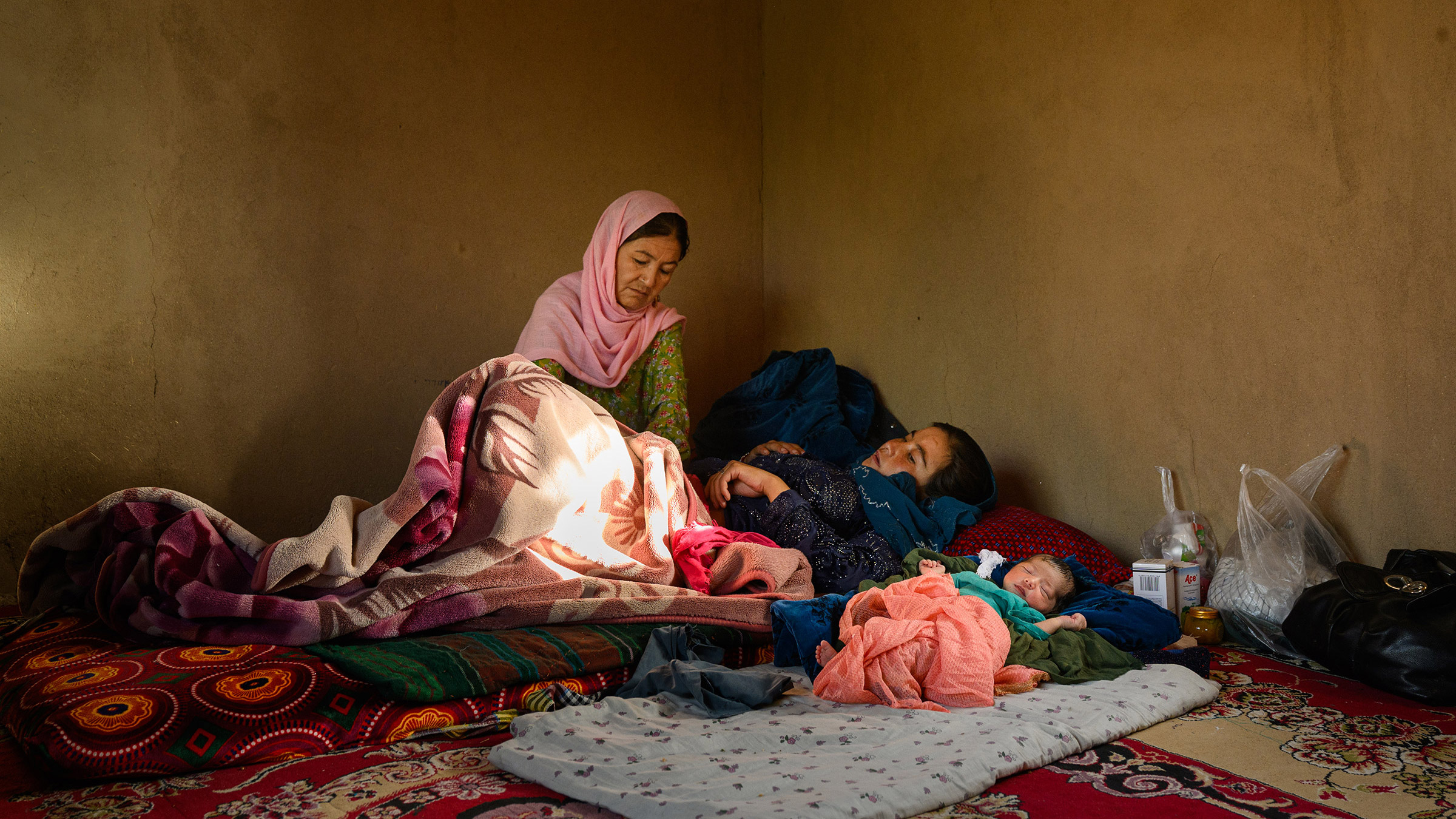Over the past 12 years, the small family-health clinic in Melmastok, a remote mountainous community in Afghanistan’s central Daikundi province, has withstood multiple upheavals—from a Taliban insurgency to the withdrawal of international troops and the collapse of the U.S.-backed government in Kabul in 2021. Ever since, as the Taliban returned to power, once again issuing edicts to suppress women and girls, the clinic and its 34-year-old midwife Atifa have continued to provide a lifeline for mothers and young children. Until this summer, that is. Come July, the clinic finally closed its doors. For Atifa, who identifies herself like many local women with only her first name, that means one thing: “Mothers and children will die.”
[time-brightcove not-tgx=”true”]
The reason? The wholesale slashing by Washington of U.S. humanitarian aid, until recently the single biggest source of development support for ordinary Afghans. That support had been critical for the survival of health and other development projects in the country, flowing in via the U.N. and its partners. But, as of August this year, funding cuts have led to the suspension or closure of 422 health facilities in the country. (Justifying the cuts, a senior Trump Administration official cited reports of attempts to disrupt aid by the country’s Taliban authorities.)
The reductions include 21 family-health clinics in Daikundi, among them Atifa’s. Officially known as Family Health Houses, and staffed by solitary midwives like Atifa, a cleaner, and a guard, the clinics provided care to women and children in areas where communities have no access to other health facilities. Nationwide, more than 100 such clinics have closed as a result of the cuts.
Read More: Far from Home: After the Fall of Kabul, Afghan Women Are Attempting to Build New Lives Abroad
The impact in many cases has been devastating. In April, Ali Hassan rushed his pregnant wife Mariam to their local Family Health House in Taiko, another remote Daikundi community, when she complained of pain and believed she was close to giving birth. It was only after waiting for the midwife for several hours that they realized that the clinic had been closed. The midwife had been laid off. Desperate for medical attention, they headed for a district hospital around five hours’ drive away. It was too far. Both Miriam, 38, and their child succumbed shortly after they reached the hospital. “There was a chance we could have saved both mother and child … or at least the mother [had the clinic been open],” Sediqa, a midwife at the district hospital, told TIME.
The hospital director, Eztaullah Alizada, agreed, adding, “These women live far away, and sometimes labor begins en route. By the time they arrive, they are close to dying.”
Globally, the trend has been going in the other direction. Years of interventions by local and international bodies mean that women today are more likely than in the recent past to survive childbirth, with maternal mortality—or the deaths of women per 100,000 live births—declining by 40% from 2000 to 2023, according to the World Health Organization (WHO).
But cuts could push Afghanistan, already suffering from comparatively high levels of maternal deaths, further in the other direction. Nearly two-thirds of global maternal deaths occur in countries like Afghanistan that are affected by “fragility or conflict,” the WHO says. As Kurshid, a 30-year-old pregnant woman in Daikundi told TIME, “All of us are afraid we or our children might die.”
Beyond pregnant women, the clinics also provided care for young children—and their closures have led to fear among many, like Mariam, a 24-year-old in Daikundi with three young children.
She used to have four. Last year, she lost her 5-month-old daughter when the child fell sick. Unable to afford a taxi, Mariam was walking her to the nearest clinic, located about an hour on foot from her home, when the child died. Now, the nearest health facility is more than twice as far away even by car. “The winter [when the region is buried under snow, restricting movement],” she tells TIME, “is even scarier.”
For midwives, the closures have robbed them of their livelihoods in what remains a severely depressed economy. “I’m getting weaker and older everyday,” Gul Chaman, a midwife in Daikundi’s Waras Valley, told TIME, fearful of what would happen once she had exhausted her savings. “I’m afraid for me and my children’s future.”
Atifa, the midwife in Melmastok, is also afraid. She says she no longer even has the supplies to work privately. It simply isn’t safe, forcing her to turn away former patients, like Soghra, a young woman in her 30s who, a week before Atifa’s clinic shut down, told TIME that she was “terrified” about giving birth.
Tragically, her worst fears were realized when she went into labor in July. With no supplies to safely assist Soghra, Atifa directed her to another clinic around two hours away by car. “I don’t know if it happened on the way or at that clinic,” Atifa says, “but she lost her child.”
Photographs by Elise Blanchard for TIME
“Mothers and children will die”
Atifa, the midwife whose Daikundi clinic has now been forced to close, underlines the stakes for Afghan women and children.
“The is no equipment, no people, no medications”
With Afghanistan’s economy still in dire straits after the international troop withdrawal in 2021, Zahirah was the sole breadwinner in her household, which includes her five young children.

